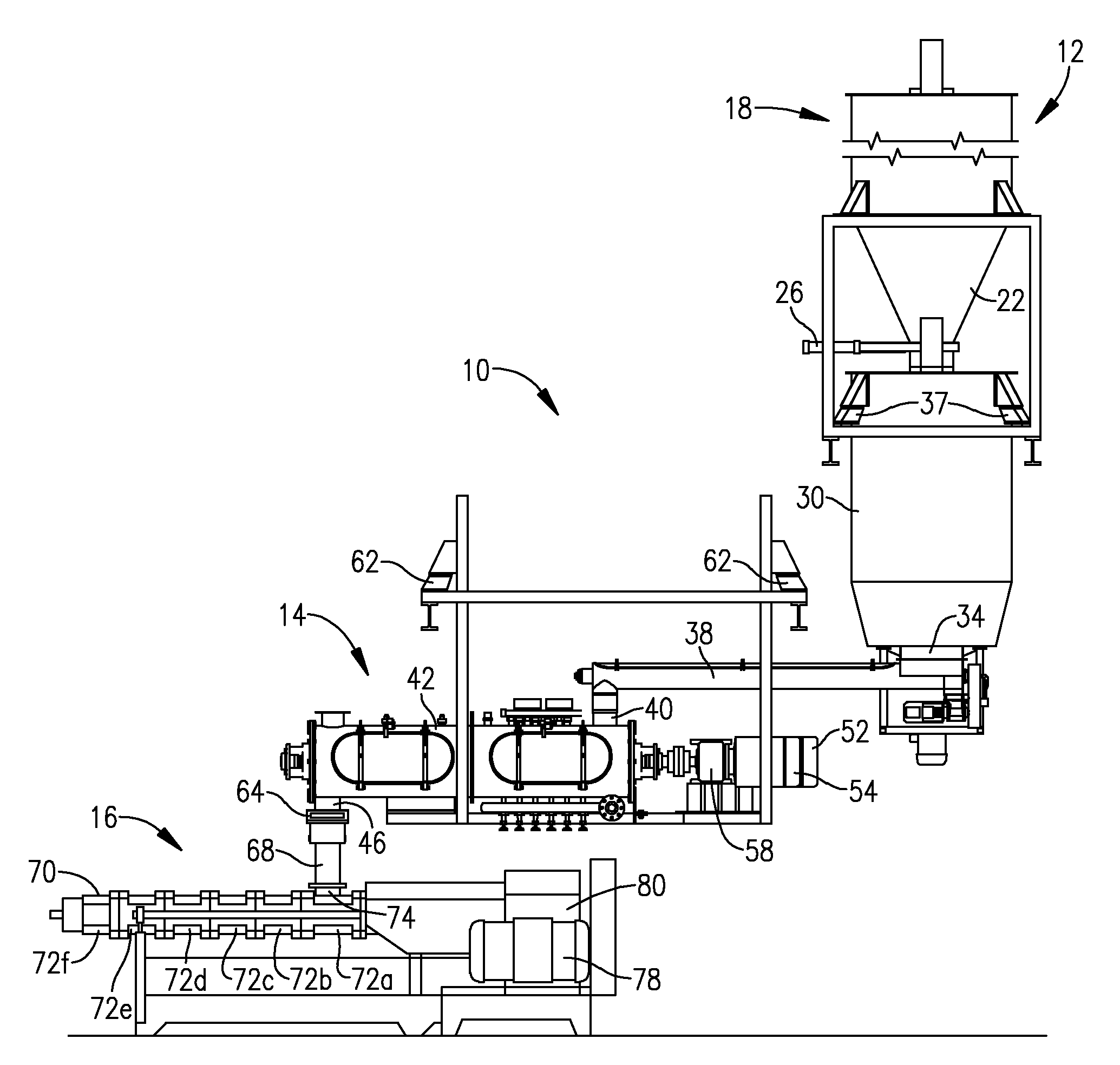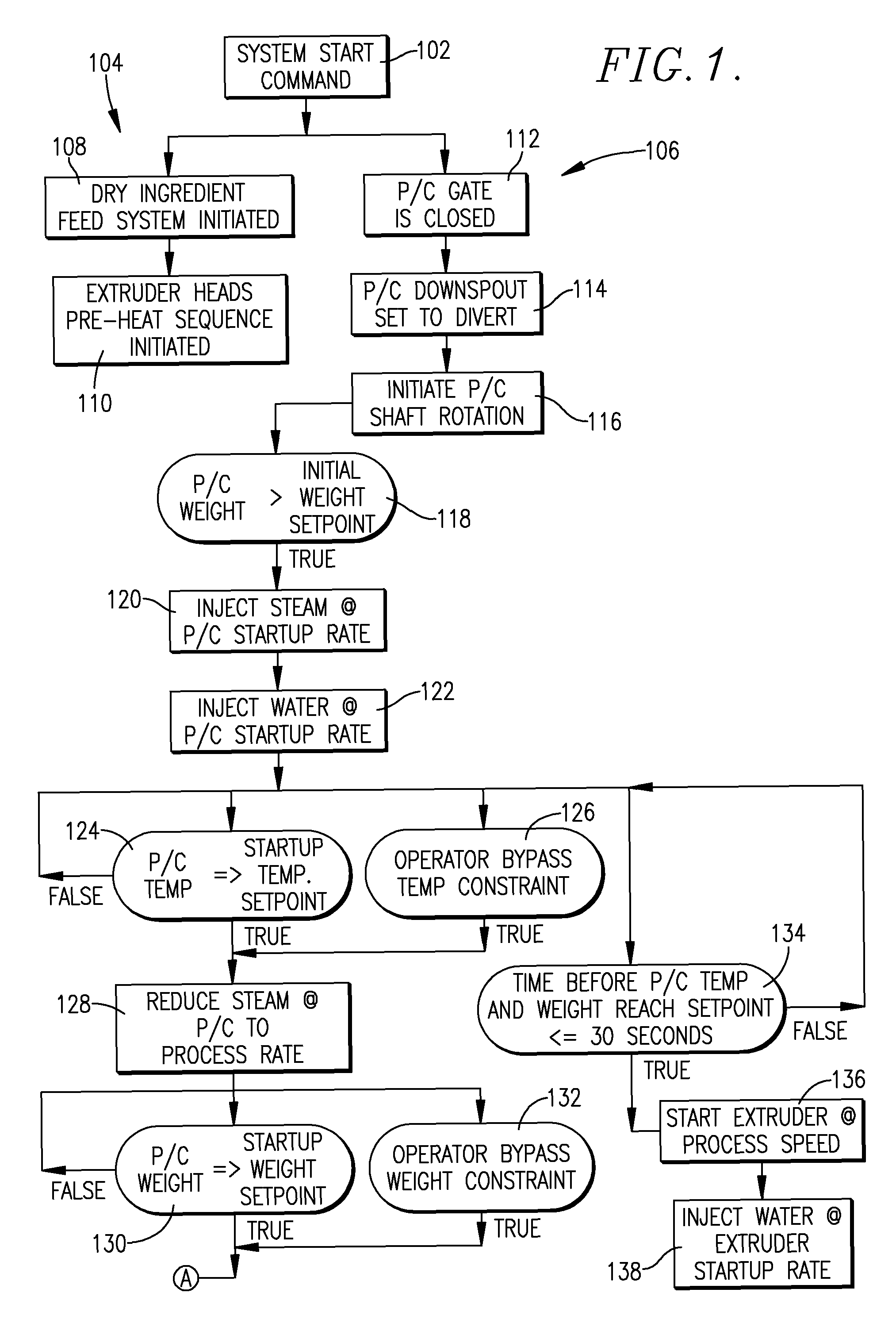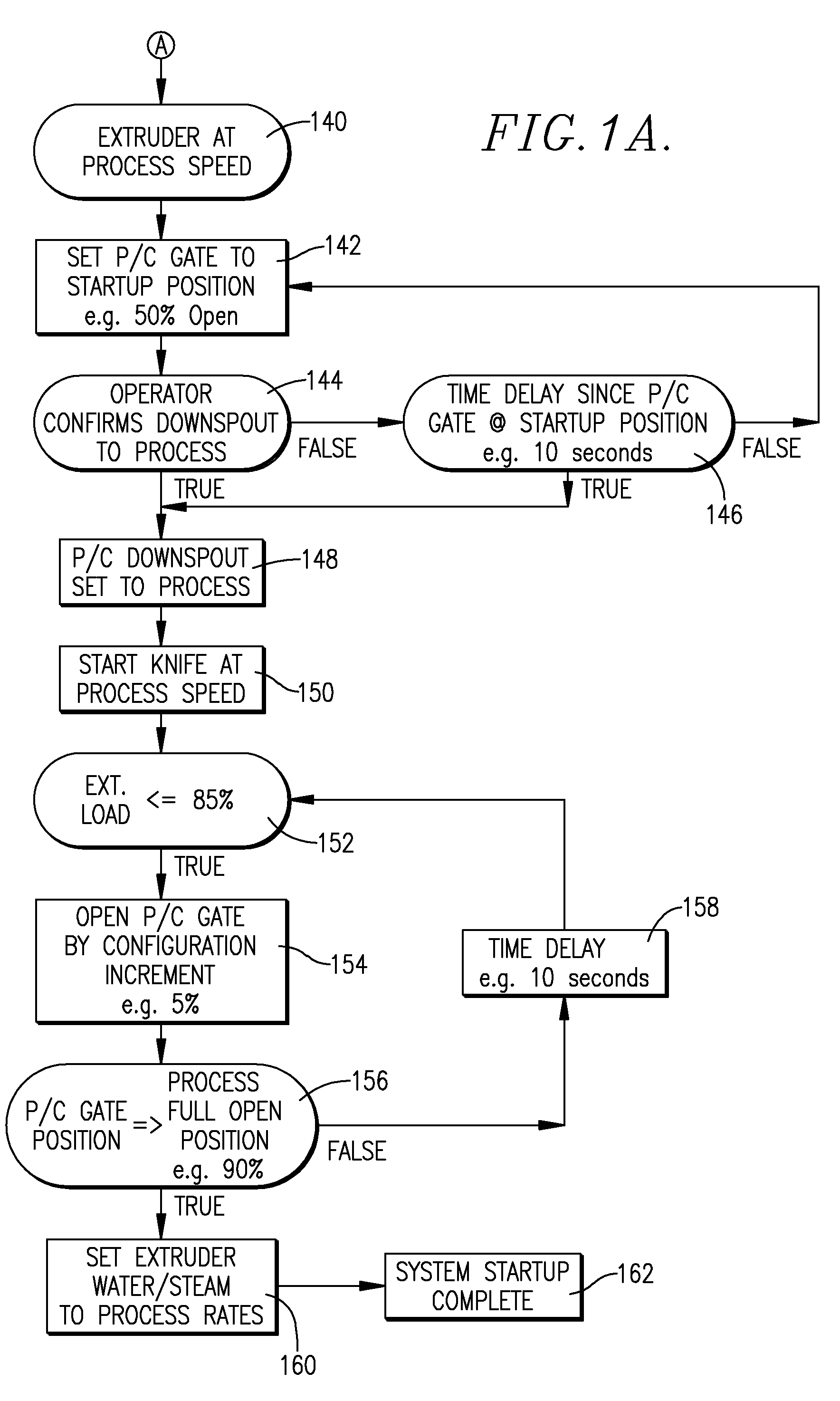Method of preconditioner control with reduced or zero waste
a preconditioner and waste technology, applied in the direction of feeding-stuff, other chemical processes, applications, etc., can solve the problems of significant waste amount, material is likewise considered waste, product production, etc., and achieve the effect of easy removal
- Summary
- Abstract
- Description
- Claims
- Application Information
AI Technical Summary
Benefits of technology
Problems solved by technology
Method used
Image
Examples
Embodiment Construction
The Preferred Extrusion System
[0025]Turning now to the drawings, an overall extruder system 10 is illustrated in FIG. 4 and broadly includes a material feed system 12, preconditioner 14, and extruder 16. As illustrated, the components are in serial order, i.e., the feed system 12 is coupled with preconditioner 14, and the latter is in turn coupled with extruder 16. The system 10 is designed for the production of a variety of human food or animal feed products.
[0026]In more detail, the feed system 12 includes a feeder assembly 18 having an uppermost frustoconical inlet bin 22, and a shiftable slide gate 26 at the base of the bin 22. The lower end of the bin 22 communicates via gate 26 with a live-bottom bin 30 having lowermost outlet 34. Load cells 37 are provided for the bin 22, to enable continuous weight monitoring of the bin. The outlet 34 is coupled with an elongated screw feeder 38 leading to preconditioner 14 and terminating with a depending conveying tube 40.
[0027]The precond...
PUM
 Login to View More
Login to View More Abstract
Description
Claims
Application Information
 Login to View More
Login to View More - R&D
- Intellectual Property
- Life Sciences
- Materials
- Tech Scout
- Unparalleled Data Quality
- Higher Quality Content
- 60% Fewer Hallucinations
Browse by: Latest US Patents, China's latest patents, Technical Efficacy Thesaurus, Application Domain, Technology Topic, Popular Technical Reports.
© 2025 PatSnap. All rights reserved.Legal|Privacy policy|Modern Slavery Act Transparency Statement|Sitemap|About US| Contact US: help@patsnap.com



